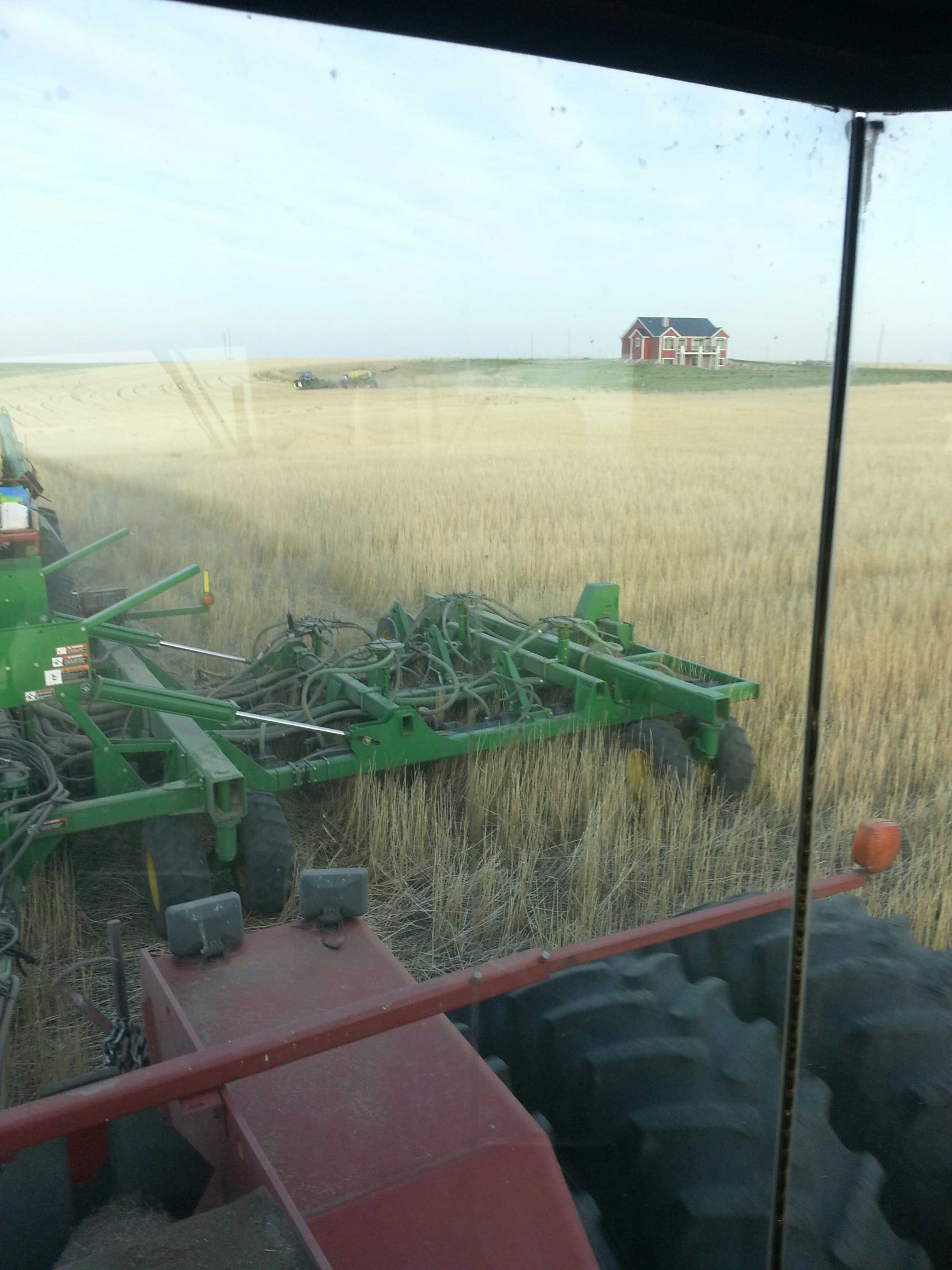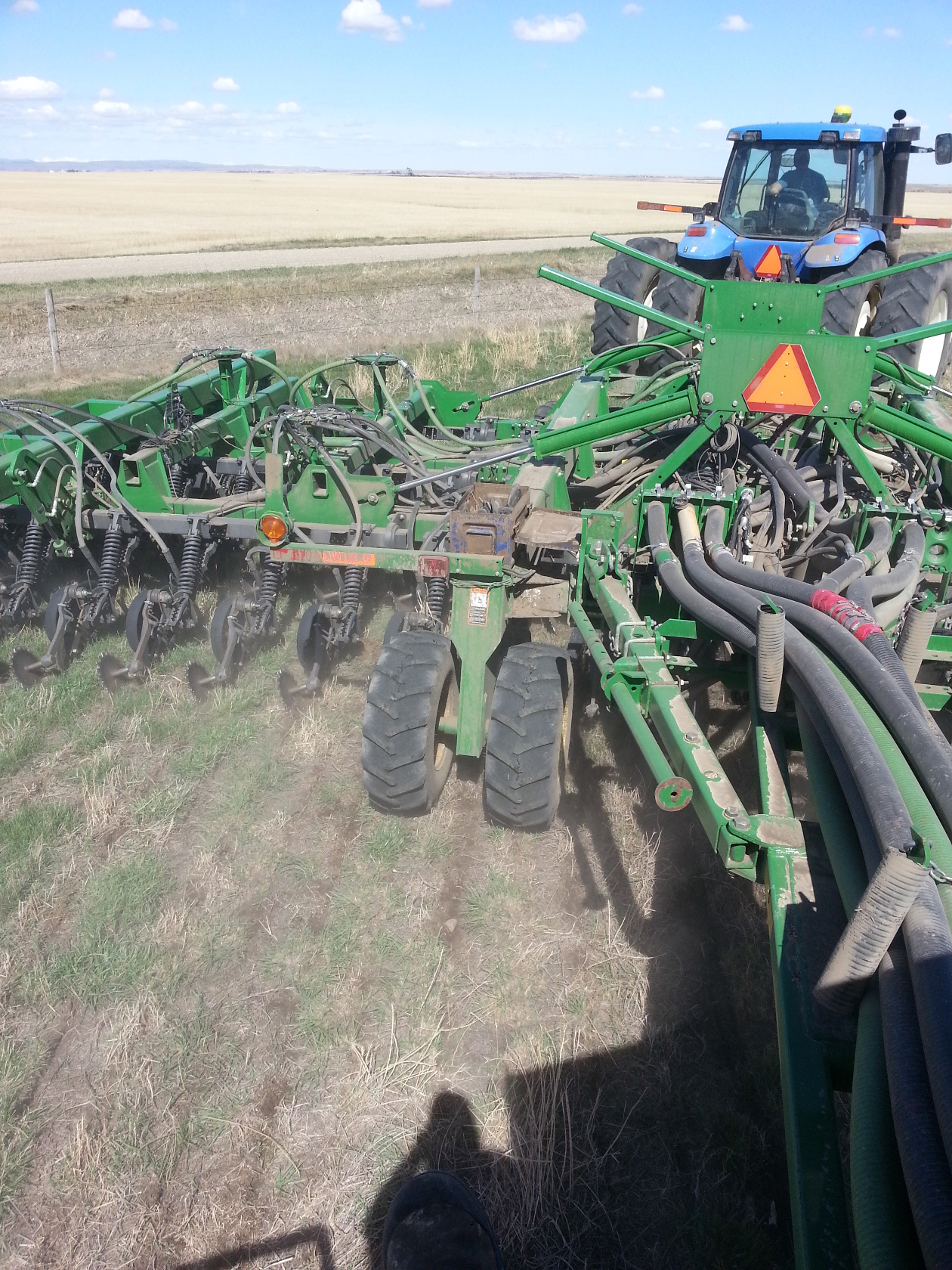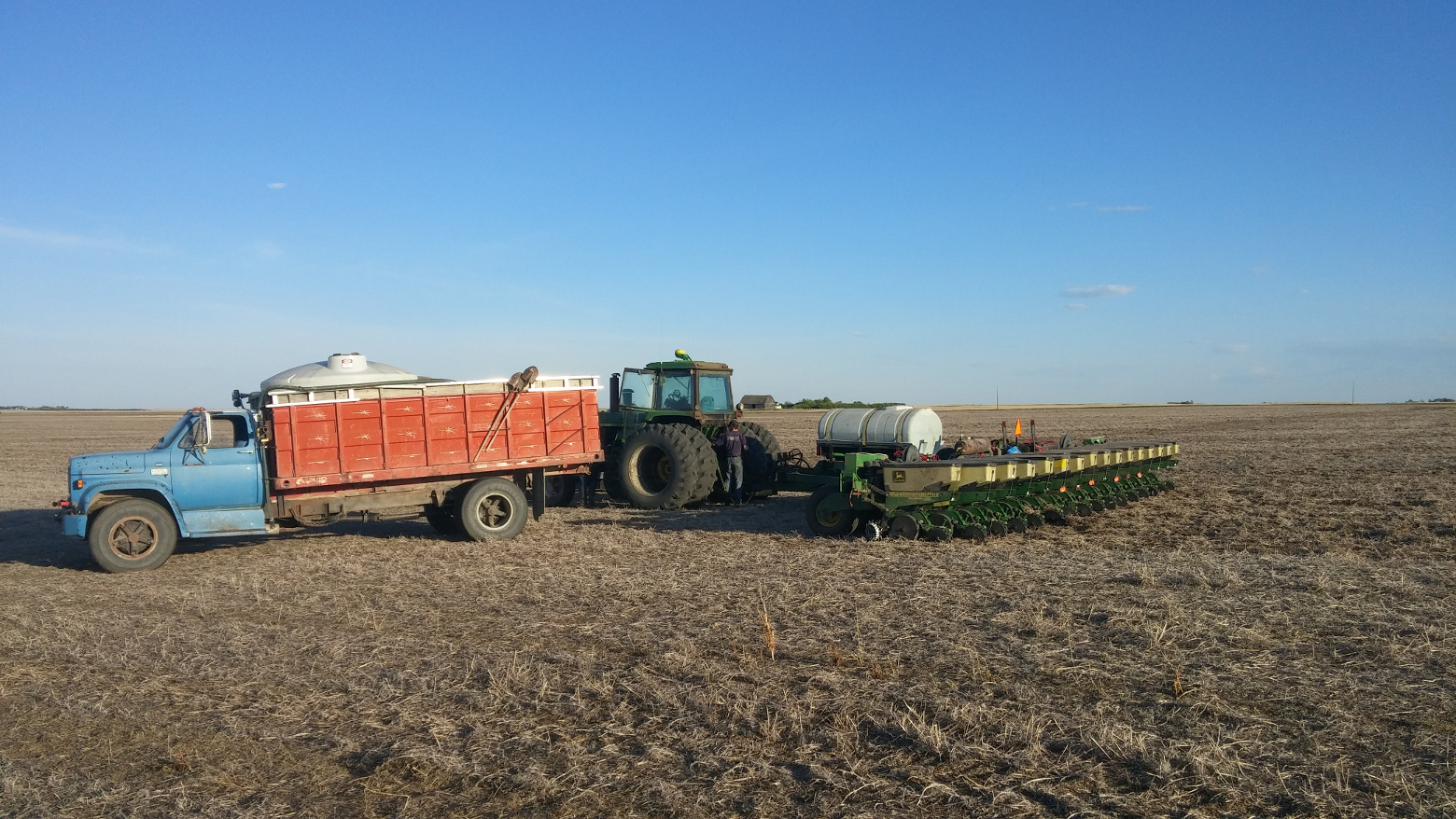Disc Drills in Annual Crops
An incredible amount of valuable residue is left behind by a stripper header, as a result, a non-typical planting system is required, hoe type machines (which are the most common in the area) will simply plug when attempting to seed in such conditions.
We do not believe that there is a single planting machine that can do an optimum seeding job in all conditions. As a result we have three different types of planting machines, each of which is capable of seeding through the unique beneficial environment created by the stripper header. We also strive to make sure we have the best most accurate planting equipment, allowing us to minimize the amount of inputs we require to create thick healthy crops.
Disc Drills in Perennial Crops
Another great advantage of disc drills is their ability to rejuvenate a pasture without the need to terminate the existing stand. With this tool we can place new grass seed quickly and accurately into an existing stand replacing species that have been lost or introducing a new desired species.
We can also terminate and replace a grass stand without having to do detrimental tillage. Disc drills may also be used to place fertilizer into the soil in an existing grass stand without hurting the existing stand and minimizing volatilization (loss) of valuable fertilizer.
While many would like to convince us otherwise, we believe that no single machine is the perfect seeding machine for all situations with that in mind we currently use 3 different seeding tools for our operation.
What is hairpinning?
Hairpinning is the technical term used when seeding to indicate that the machine is not cutting through the residue but instead is riding on top of it.
John Deere 1895
This trusty machine was the first disc drill in our fleet and has seen many many acres over the years. We really like our 1895 disc drill, it is a highly precise very low disturbance seeding machine, however it has limitations in extremely high residue situations, especially in cool, damp or very high residue conditions. In these conditions the deere will hairpin. This causes extremely poor seed placement and dramatically reduces plant population. In order to combat this we have purchased a Pillar Lasers disc hoe hybrid seeder.
This machine is the backbone of the farm, and is the machine that we use for a bit of everything if the residue load is not too high, this drill with its narrow opener profile and low disturbance is great for seeding cover crops into existing living cash crops.


Pillar Lasers Disc/Hoe Drill
The Pillar Lasers is a disc drill that takes the best attributes of a disc drill the (ability to seed through long abundant residue); and the best attributes of a conventional hoe drill (the inability to hairpin) and combines them using a disc that combines with a seed boot that acts like a hoe type opener.
This marriage creates a drill that is great for seeding through high amounts of residue but has less precision and higher seedbed disturbance as a penalty.
This machine allows us to leave even more residue on the fields reducing the need to cut and bale straw off, it also allows us to return livestock back to traditional crop land as we are no longer worried about livestock creating a scenario where hairpinning is favored.
Thanks this drill we are more willing to experiment with scenarios that may cause hairpinning as we know that if we cannot seed a field with the 1895 we can always seed it with the Pillar. This machine is primarily used for large sized deep seeded crops such as peas and wheat.

John Deere 1780 31R 15 Planter
We have also recently added a row (corn) crop planter to our seeding toolbox. This was decided in order to further increase the options we have for planting and crop types. Another reason we chose to use a planter was to lower our seed costs and just as importantly we can reduce the amount of treated seed w plant which lowers our pesticide loads.
We have tried and have been unsuccessful in trying to procure the best genetics in canola and sunflower seed that are not treated with insecticidal seed treatments. By using a planter instead of the more conventional air seeder we can use half the seed and effectively lower our neonicotinoid rate by half while saving money on seed a win win.
The main reason we can do this is because a planter has the ability to singulate seed, every plant is spaced an even distance away from its neighbors in the seed row, allowing each plant an equal opportunity to thrive. On the other hand, an air delivery system (as is on most broad acre seeding machines in the area) is basically a controlled spill into hurricane force winds resulting in some seeds that are placed too close to each other and some too far apart within the seed row. Air seeding equipment also can result in seed damage as seeds are blown around curves at high speeds.
The planters superior seed distribution system combined with one of the most precise seed openers available created a scenario that allows maximum amounts of viable plants to be produced from minimal amounts of seed.
This machine works excellent for canola, sunflowers, and corn.
In exchange for the advantages of a planter trade the simplicity of a standard air delivery system for increased complexity. But we feel that the advantages are worth it.